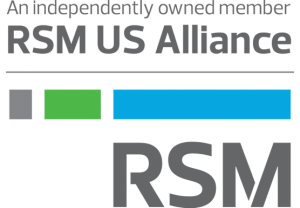Insights
We are proud to be named a West Coast Regional Leader for 2024


Setting the course for maximum value creation
E-BOOK | June 20, 2023
Authored by RSM US LLP
The first 100 days following an acquisition are a critical period for the private equity firm and their newly acquired portfolio company as the focus shifts from investment closing to preparing for long-term value creation.
PE teams and portfolio company management have a short window in which to rapidly address a variety of issues that span operational improvements, sales channel and new market expansion, IT system upgrades and reporting system changes. As the hold period clock starts ticking, every week counts.
Collective experience has proven that most successful value creation plan implementations focus on four key practices that improve the chances of meeting or exceeding expected value.
Discover the essential strategies and tools of 100-day plans
Prioritize people
Given the rigors of the acquisition process and how much work goes into closing a deal, management of the newly acquired portfolio company often does not have the bandwidth to tackle all of the important post-close action items on their own. For staff to successfully pivot and support the new business goals, private equity firms and management teams should address key human capital issues immediately. This allows employees to shift their focus from short-term disruption to implementing the changes that will lead to value creation.
Prioritize human capital issues by focusing on these areas:
Change management. Take the time in advance to determine how ready the target organization is for change and what funds will be needed to minimize employee disruption and retain essential staff. This could include everything from employee reorganization and salary adjustments to retention bonuses and severance packages.
Staffing considerations. If job eliminations are part of the plan, act quickly so fear does not taint the entire enterprise. Reassure the remaining staff that their positions are safe, but expect some inevitable turnover. Identify those “can’t lose” employees and develop a plan to keep essential talent in place. Bring on additional resources, full time or external, as needed to help existing staff avoid burnout and to increase bandwidth in key areas that need additional support.
Transparency. Articulate the goals of the new organization, the key steps that must be taken along the way and the tools that will be provided for success. The most effective excitement and momentum builders after the acquisition are candor and a solid road map.
Install a transformation team
It is crucial to establish a team that will oversee the execution of the newly established value creation plan and work to keep projects on track. Team members will establish task and resource priorities and manage any conflicts that arise between cross-functional teams. They will also provide management with a definitive source of leadership and assistance. Effective transformation teams bring a positive energy to the change management process and maintain a tempo to drive end-goal achievement.
Transformation teams have many responsibilities, but the following are four of their most important:
Come prepared. Perform adequate diligence on IT, cyber and other key areas. Identify the necessary items to remediate risk and the opportunities to create value before the acquisition. Build management buy-in during the closing period.
Share the value creation plan. It is essential to articulate the blueprint for change so that leadership and key personnel involved in the integration and improvement work understand the multi-year process. This includes outlining and sharing specific timelines and deadlines, responsibilities and ownership, and key goals and metrics.
Monitor and measure frequently. Weekly interaction between the private equity firm and management allows the transformation team to immediately determine if any project is veering off course and to take corrective action as soon as deviations from the plan are first detected.
Bring capabilities and resources to bear. Common issues that arise during the first 100 days include talent shortcomings, increased staff workloads and having to acquire or upgrade key technology solutions.
Level up communications
As the new portfolio company begins addressing the value creation plan, frequent and elevated communication at all levels becomes a critical tool for sharing key information, motivating employees and celebrating achievements.
Consider these tactics:
Hold frequent, in-depth meetings to stay on track. Daily stand-up meetings allow the private equity firm and company management to engage in fast-paced status reviews of objectives, tasks and accomplished goals. These sessions should be designed to encourage action and remove roadblocks, but they will have the added benefit of connecting cross-functional teams.
Expand employee communications. Regularly communicating key information will help staff feel included and keep them focused on successfully accomplishing established priorities. Giving them access to basic KPI dashboards so they’re aware of the number of new clients served or systems onboarded offers a sense of inclusion regarding ongoing projects. Additional methods to communicate progress might include town halls, daily updates or email blasts. When determining which communication methods would be most effective, consider the unique culture of the portfolio company.
Speak with one voice. Post-close, there are no longer two entities—the private equity firm and management are now working toward the same goals. To this end, it is critical for management to positively buy into the plan, own the goals and move efficiently into the execution stage, all while conveying confidence in the long-term strategy. Employees will notice any incongruent communications, so a unified voice is essential.
Monitor and measure
Deal success requires maintaining a laser focus on reaching key performance benchmarks. Keeping the plan moving toward its ultimate goal takes a disciplined approach that incorporates these four action items:
Communicate clear expectations around goals. Management and staff must understand what milestones they need to meet and how to reach them before they can achieve them. Any projects identified during the diligence phase and management meetings need to be carried through to programs and all deliverables should have clear outcomes. Setting key performance indicators early in the process and communicating your purpose and strategy from the top down will foster team alignment around business objectives and help drive success.
Track progress and measure performance against milestones. Develop recurring reporting and dashboards and circulate them with the broader team to instill a culture of transparency around goal progress. If using a cost-out approach, be sensitive to the concerns of team members but don’t pretend it isn’t happening. Regular and accurate reporting is critical to help keep employees engaged during a merger or acquisition. Consider offering incentives aligned to performance, which can serve as a powerful motivator when used properly.
Establish and enforce accountability standards. Use frequent check- ins to keep people informed and on track. If deviations from the plan are detected, identify the problem that must be solved and act fast, as a delayed response can kill a deal. Using clear and accurate reporting that was established and benchmarked before the close will help motivate team members and keep them accountable in their role.
Pause, reflect and adjust as needed. Integrate mindfulness into project and program management to know when to make a course correction, then move quickly to minimize disruption and realign resources. Time is of the essence when seeking to capture value from a deal, as some employee turnover is to be expected following a transaction. Make sure the team understands the end goal by communicating the decision rationale and being transparent about forthcoming changes. Provide the why or vision when setting direction to help maintain team engagement around goals, and offer incentives to key resources and departments to motivate and help retain top talent.
Conclusion
Private equity firms know that the first 100 days following an acquisition are a critical transition period that sets the stage for creating value tied to the investment thesis and planned exit. They also understand that having structured tasks in place and executing them efficiently will get the portfolio company to compounded growth sooner, which provides the strongest possible outcome at exit. The practical steps outlined above, when put into practice in a rigorous and disciplined way, will help firms derive maximum value from every deal.
Let's Talk!
Call us at +1 213.873.1700, email us at solutions@vasquezcpa.com or fill out the form below and we'll contact you to discuss your specific situation.
This article was written by RSM US LLP and originally appeared on Jun 20, 2023.
2022 RSM US LLP. All rights reserved.
https://rsmus.com/insights/services/merger-acquisition/setting-the-course-for-maximum-value-creation.html
RSM US Alliance provides its members with access to resources of RSM US LLP. RSM US Alliance member firms are separate and independent businesses and legal entities that are responsible for their own acts and omissions, and each is separate and independent from RSM US LLP. RSM US LLP is the U.S. member firm of RSM International, a global network of independent audit, tax, and consulting firms. Members of RSM US Alliance have access to RSM International resources through RSM US LLP but are not member firms of RSM International. Visit rsmus.com/about us for more information regarding RSM US LLP and RSM International. The RSM logo is used under license by RSM US LLP. RSM US Alliance products and services are proprietary to RSM US LLP.

Vasquez & Company LLP is a proud member of the RSM US Alliance, a premier affiliation of independent accounting and consulting firms in the United States. RSM US Alliance provides our firm with access to resources of RSM US LLP, the leading provider of audit, tax and consulting services focused on the middle market. RSM US LLP is a licensed CPA firm and the U.S. member of RSM International, a global network of independent audit, tax and consulting firms with more than 43,000 people in over 120 countries.
Our membership in RSM US Alliance has elevated our capabilities in the marketplace, helping to differentiate our firm from the competition while allowing us to maintain our independence and entrepreneurial culture. We have access to a valuable peer network of like-sized firms as well as a broad range of tools, expertise and technical resources.
For more information on how Vasquez & Company LLP can assist you, please call +1 213.873.1700.
Subscribe to receive important updates from our Insights and Resources.